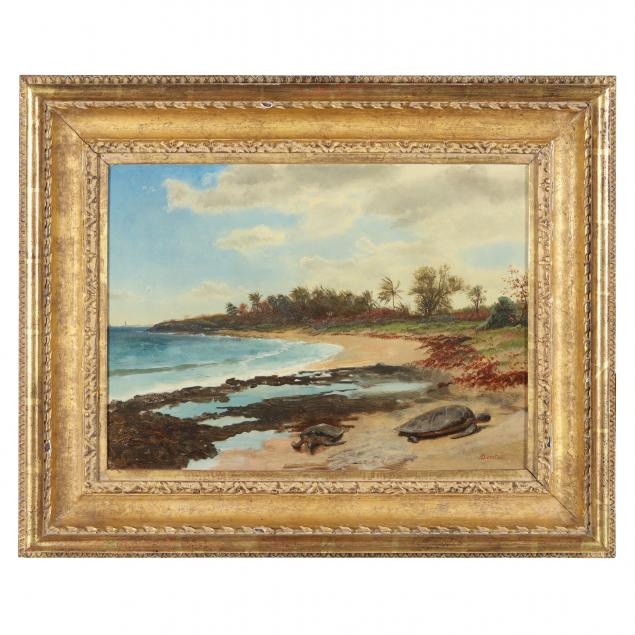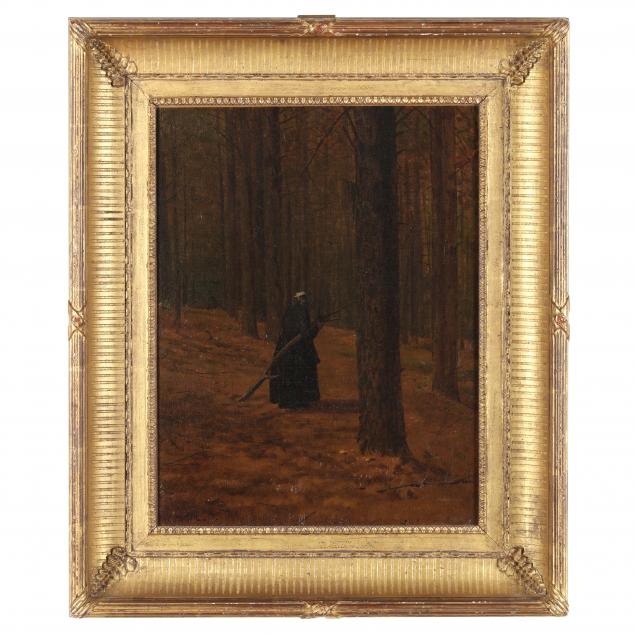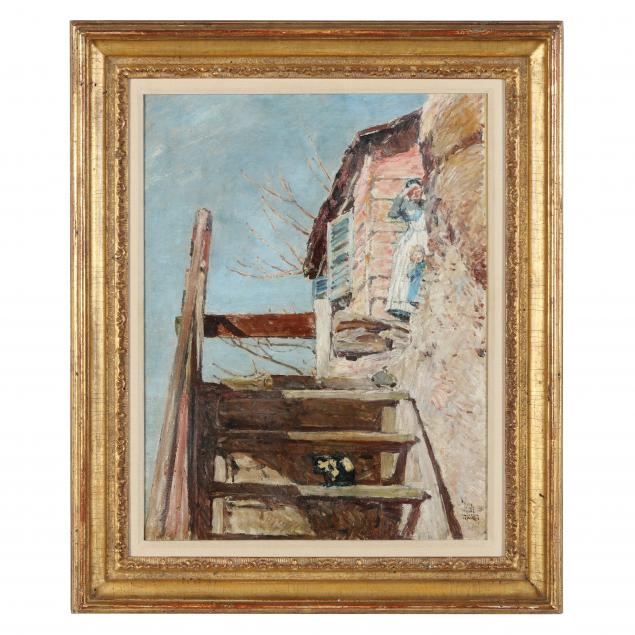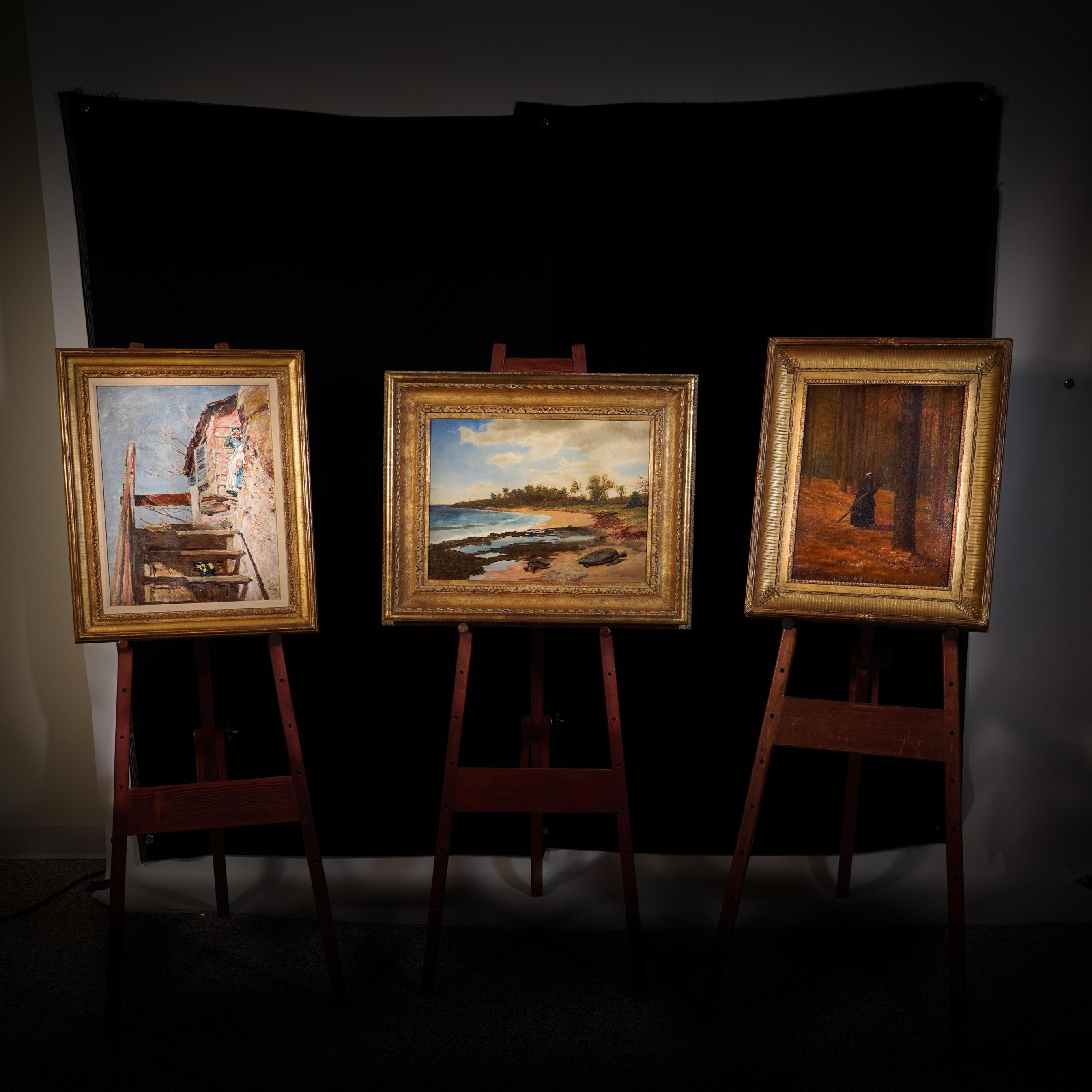
Bierstadt, Homer, and Hassam: Founding Fathers of American Art
Winslow Homer, Albert Bierstadt, and Childe Hassam were titans of American painting in the late 19th and early 20th centuries. Three works in our upcoming Summer Signature Auction firmly made their impressions on the landscape of American art history, the artists themselves becoming household names.
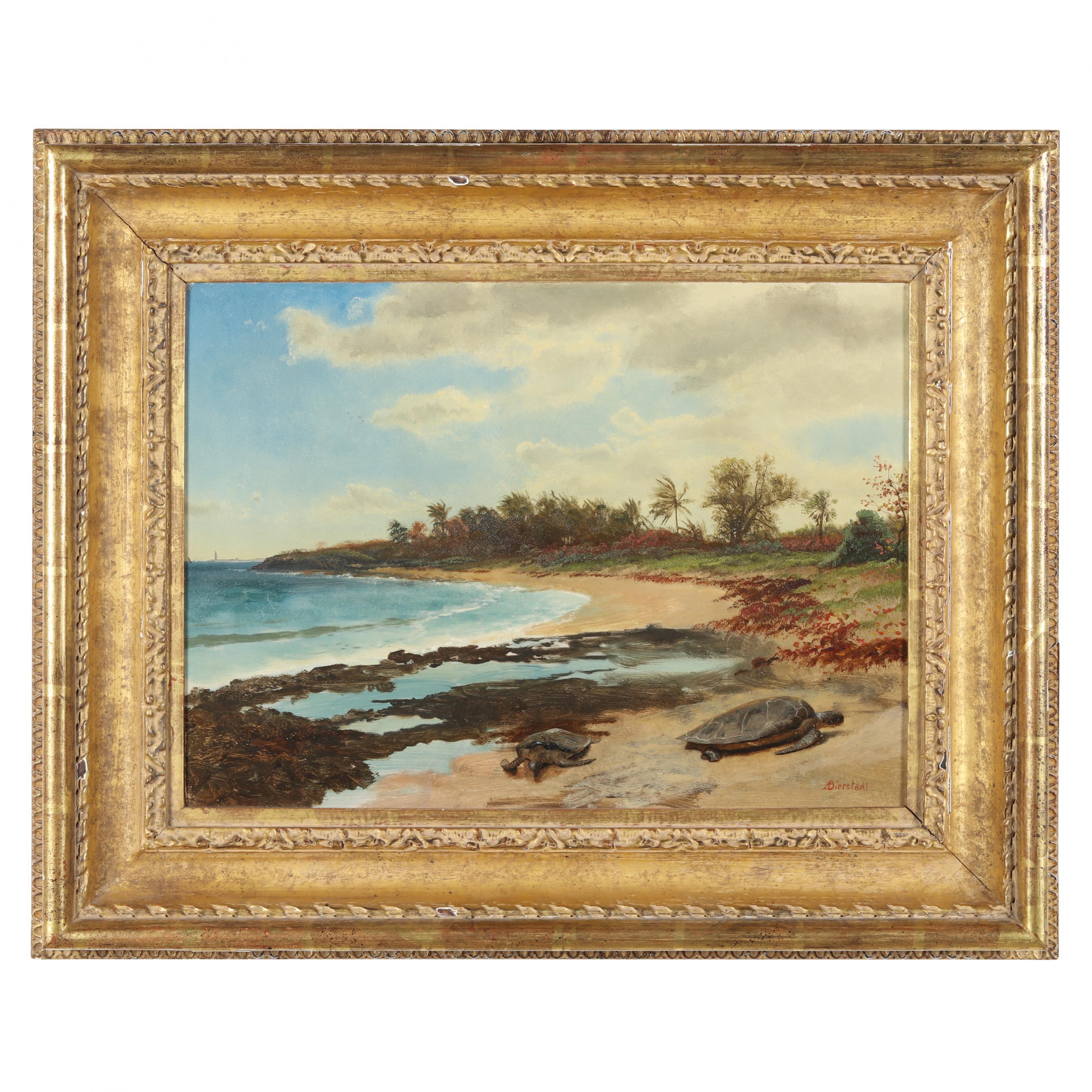
Albert Bierstadt (American, 1830-1902), Nassau Beach. oil on paper laid on canvas, signed at lower right, presented in a later gilt frame, retaining exhibition labels to verso.
Director of Fine Art, Claire Fraser, explores the relationship of these works to what was happening in America when the artists brought them to life on canvas.
Albert Bierstadt is known in American Art history as being the preeminent painter of the American West. It is generally accepted that his majestic paintings influenced Congress to establish Yosemite as a national park. Bierstadt was responsible for changing the world view of those who gazed upon his artworks, most of whom would never travel past a small area in which they lived. Bierstadt was sensitive to this and ensured his gallery was open to the public.
Albert Bierstadt is known in American Art history as being the preeminent painter of the American West. It is generally accepted that his majestic paintings influenced Congress to establish Yosemite as a national park. Bierstadt was responsible for changing the world view of those who gazed upon his artworks, most of whom would never travel past a small area in which they lived. Bierstadt was sensitive to this and ensured his gallery was open to the public.
Bierstadt made his first trip to the Bahamas in 1877 when he was 47. His wife, Rosalie, had tuberculosis and wintered in Nassau from 1876 until her death in 1893. When we consider the personal nature of Bierstadt’s trips to Nassau, it is wondrous that we see a closer and intimate point of view - not the sweeping, majestic views of which he has become synonymous with - Bierstadt was creating a more personal reflective study of the landscape.
The present oil sketch would have been referred to while Bierstadt was completing After a Norther in the collection of The Haggin Museum, Stockton, California. This large finished painting includes a rocky grouping in the far left and a sea turtle.
The present oil sketch would have been referred to while Bierstadt was completing After a Norther in the collection of The Haggin Museum, Stockton, California. This large finished painting includes a rocky grouping in the far left and a sea turtle.
Winslow Homer is among the most important American artists of the 19th century, beginning his artistic career as a lithographer’s assistant in Boston before moving to New York to work as a freelance illustrator.
In October of 1861, Homer was sent to the war front in Virginia as artist-correspondent for Harper's Weekly where he gained national attention for his perceptive and piercing depictions of American life during the Civil War. His study and practice yielded works that reflected a profound understanding of the war’s impact and meaning. Homer’s mastery of mediums, depth of perception, and ability to portray dramatic compositions firmly ensconced him as a founding father of modern American art.
In October of 1861, Homer was sent to the war front in Virginia as artist-correspondent for Harper's Weekly where he gained national attention for his perceptive and piercing depictions of American life during the Civil War. His study and practice yielded works that reflected a profound understanding of the war’s impact and meaning. Homer’s mastery of mediums, depth of perception, and ability to portray dramatic compositions firmly ensconced him as a founding father of modern American art.
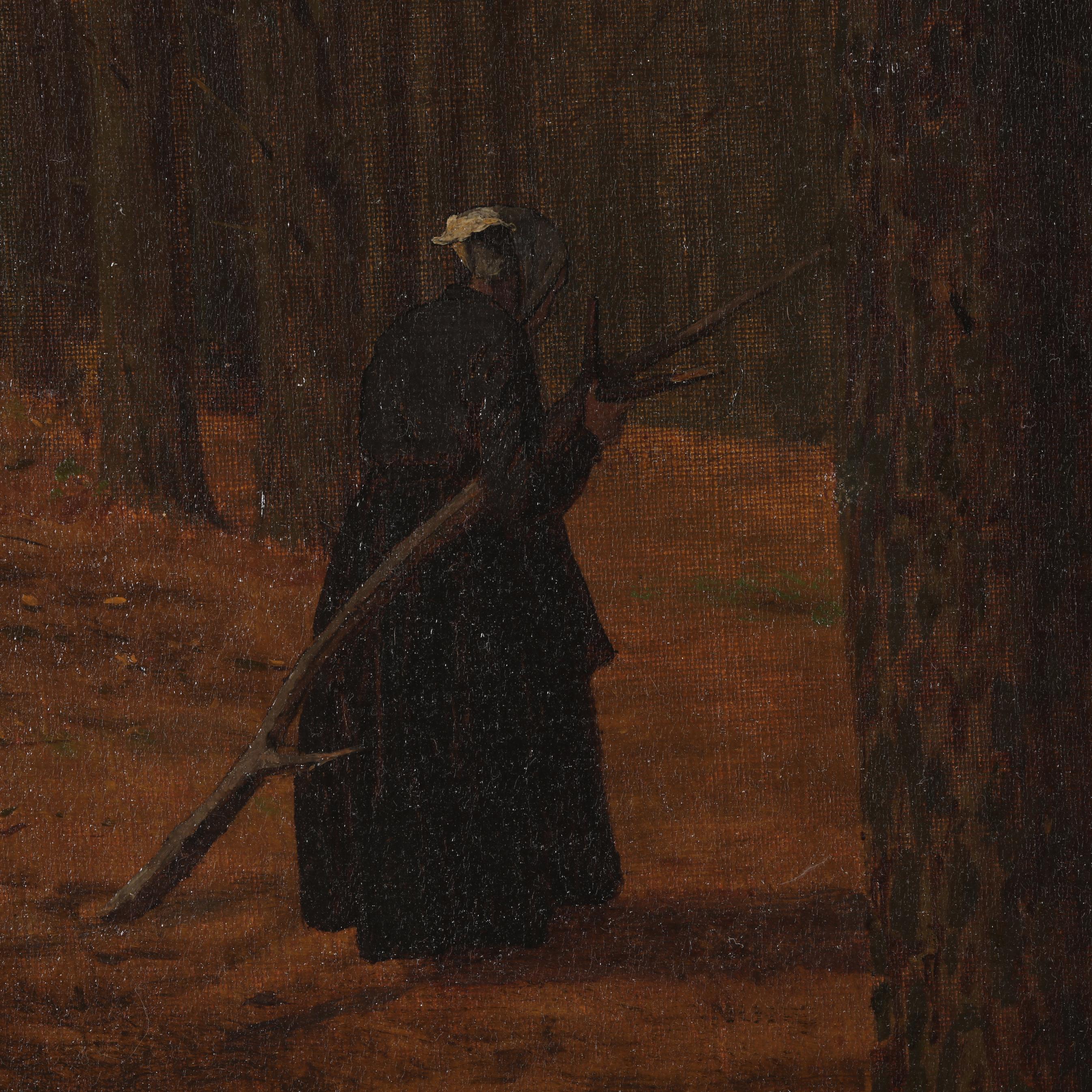
Winslow Homer (American, 1836-1910), Woman Gathering Brush. oil on canvas (lined), signed and dated 1865, presented in a later gilt frame, retaining exhibition labels to verso. (detail).
Bierstadt and Homer were contemporaries, focusing on very different subject matter, but both were creating art for the public. Bierstadt with his museum-like gallery in New York and Homer, as an illustrator with Harper’s Weekly, with more pictorial and figural works that were narrative; a journalist who used art to report.
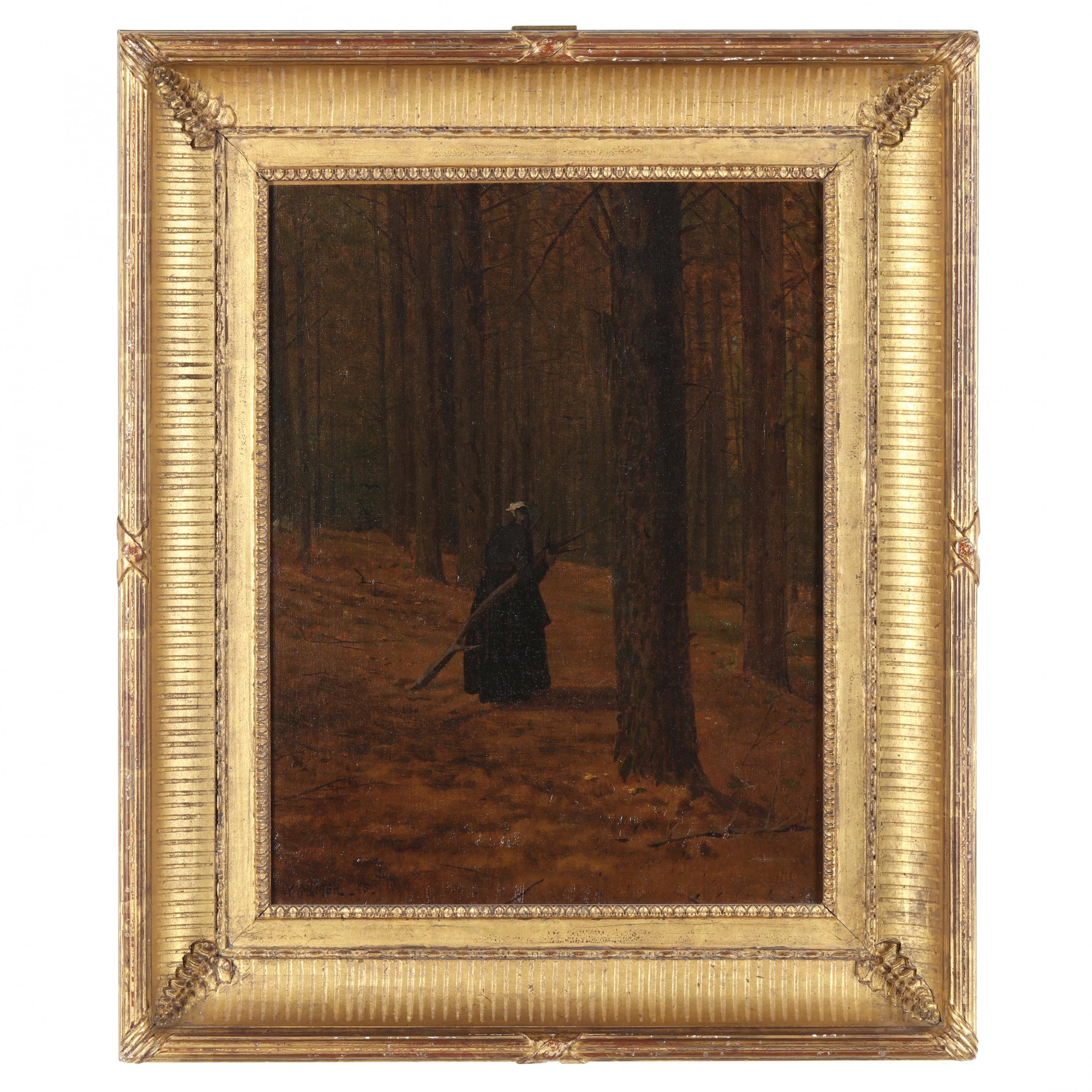
Winslow Homer (American, 1836-1910), Woman Gathering Brush.
With the end of the war, and thus the end of his war commission, Homer was drawn to quieter subjects, focusing primarily on scenes of childhood and young women, reflecting no doubt a yearning for simpler times. Woman Gathering Brush was painted this same year the American Civil War ended and represents the start of a period of his work known for freer brush strokes, more peaceful subject matter and represents what would become one of Homer’s most well-known motifs - the solitary female figure.
Childe Hassam was the foremost American Impressionist painter, instrumental in promoting Impressionism to American collectors and museums alike. His best known works depict bustling scenes of urban life and quiet rural New England retreats. He became the most prolific chronicler of New York City at the turn of the century and stated “the man who will go down to posterity is the man who paints his own time and the scenes of every-day life around him.”
The Stairs is a masterful vision of an ordinary moment in turn of the century life. A curious mother and a playful child peek around the corner, gazing out at the viewer from their door. A cat perches comfortably on the stairs, characteristically uninterested in the visitor.
The barren tree in the background sets a tone for the scene, denoting not only a chilly temperature on a sunny day, but a lack of abundance in this simple family scene - challenging the traditional mother and child portraiture which was just as much a documentation of wealth as of the sitters themselves.
The barren tree in the background sets a tone for the scene, denoting not only a chilly temperature on a sunny day, but a lack of abundance in this simple family scene - challenging the traditional mother and child portraiture which was just as much a documentation of wealth as of the sitters themselves.
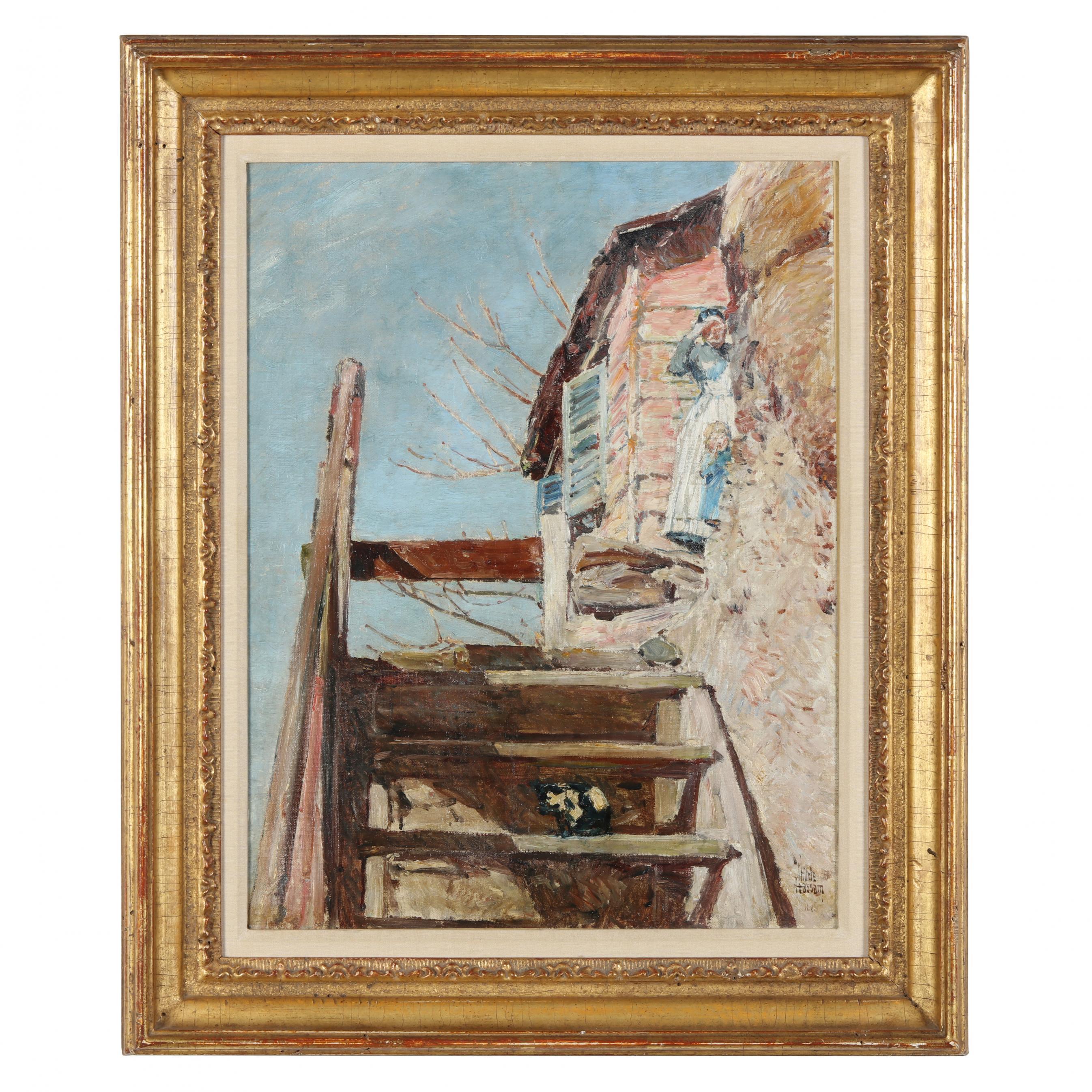
Childe Hassam (American, 1859-1935), The Stairs. oil on canvas (lined), signed at lower right
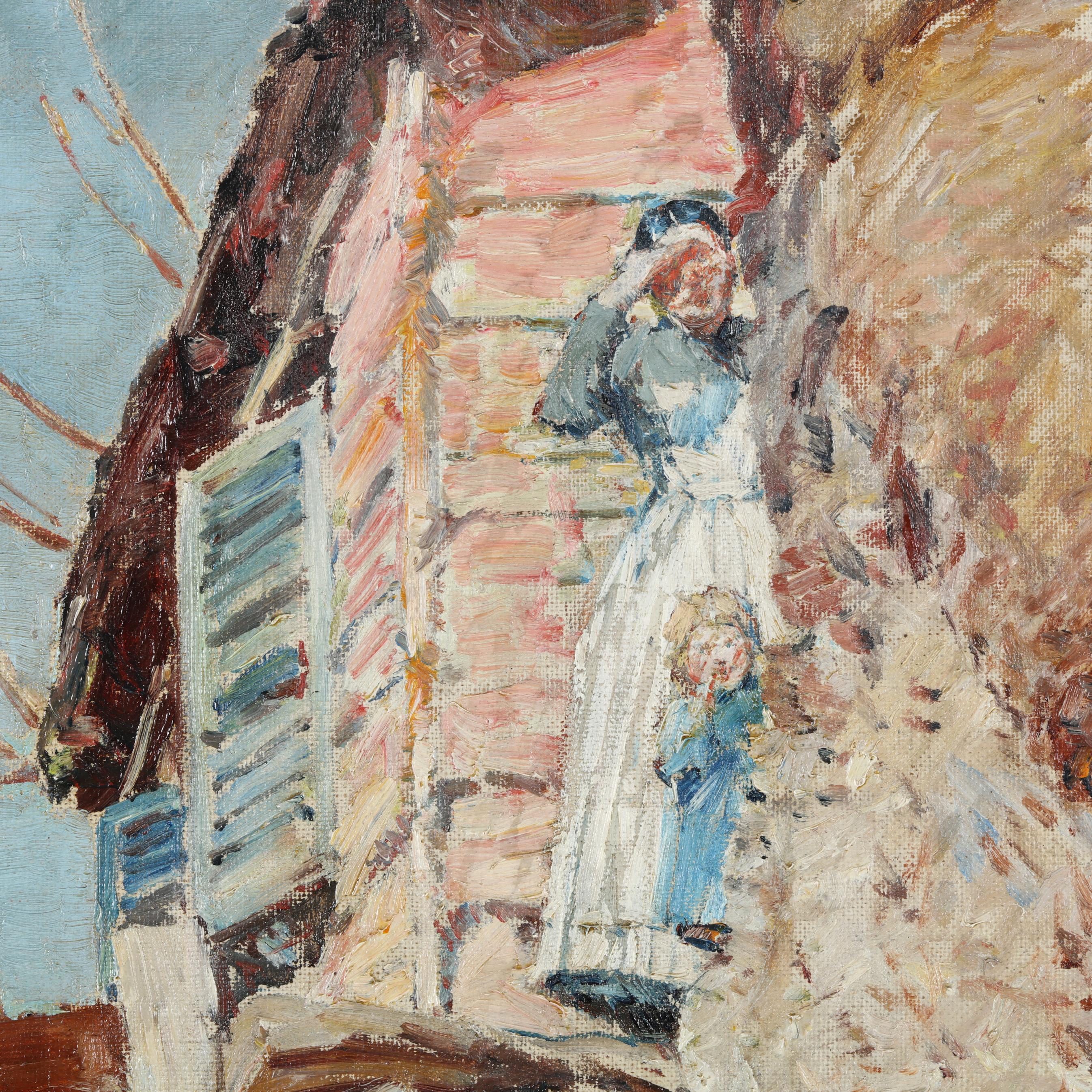
Childe Hassam (American, 1859-1935), The Stairs. (detail)
Consider John Singer Sargent, the leading portrait painter of the generation; was born just 3 years before Hassam and died just 10 years earlier. Sargent approached his subjects in a divine manner; centered, lit from the heavens, dressed in the finest of fashions.
Hassam’s style couldn’t be more different and because of that, it solidifies itself in not only art history, but history itself, as showcasing another side of American life.
All three works are from the Collection of the late Dr. & Mrs. Henry C. and Barbara Landon III, of Wilmington, North Carolina. Dr. & Mrs. Landon strove to compile a collection of important American art that they could then share with the public. These works have been exhibited across the Southeast, most notably at the Mint Museum in Charlotte, North Carolina and the University of Virginia Art Museum in Charlottesville.
Leland Little is proud to present these three historic works in our Summer Signature Auction on June 11.
Leland Little is proud to present these three historic works in our Summer Signature Auction on June 11.


